contact
SUPPORTING FAMILIES THROUGH CHILDHOOD CANCER
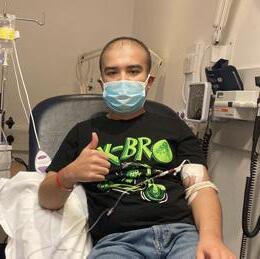

SUPPORTING FAMILIES THROUGH CHILDHOOD CANCER

What aspects of treatment and care have developed? How is research helping?
SUPPORTING CHILDREN IN LOW-INCOME COUNTRIES
WHAT ARE LATE EFFECTS?
Jake Andrade, who underwent treatment for leukaemia aged 13 and 19, tells us what helped him get through treatment and recovery. Page 6
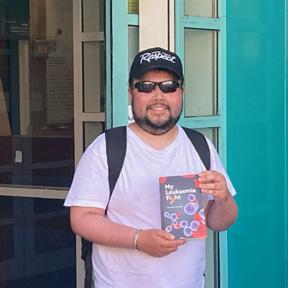
BACK TO BASICS:
How supportive care has developed to improve quality of life for patients
Dr Bob Phillips and Dr Jess Morgan explain how supportive care has progressed to support childhood cancer patients throughout their treatment. Page 8
05 Patient story
Lillie Killick, who was diagnosed with leukaemia in 2010, tells us how some of the support she received after treatment helped inspire her career choices
10 Dr Helen Jenkinson and Dr Ruman Rahman explain how doctors are not only looking to make treatments safer but also improve the way they're delivered
11 Menai Owen-Jones, CEO of LATCH Welsh Children's Cancer Charity, reflects on the charity's achievements as it celebrates its 40th anniversary in 2023
14 Phil Brace, CEO of The Little Princess Trust, tells us about an important partnership that will help more young people access clinical trials
16 Ellie Ellicott, CCLG Research Communications Executive, explains how the experiences of those that matter the most are helping shape future research
17 Using next-generation gene technology to help children with blood cancers in low-income countries
A research projected funded by CCLG
04 Medical adviser
Dr Bob Phillips introduces the theme of ‘Progress'
04 News in brief
A round-up of the latest updates in childhood cancer
08 Back to basics
Dr Bob Phillips and Dr Jess Morgan explain how supportive care has progressed to support children's cancer patients throughout their treatment
15 A parent's view Sarah Davis, mum to Emma who was diagnosed with leukaemia aged 12, writes about the progress her daughter has made since finishing treatment
18 60 seconds with...
Dr Vikki Langford, a Paediatric clinical psychologist, tells us about her career and how she supports children and young people with cancer
19 Ask the expert Nicky Webb, Clinical Nurse Specialist for the long-term followup of survivors of childhood cancer, answers your questions on late effects
06 Patient story
Jake Andrade, who was first diagnosed with cancer as a 13-yearold before relapsing aged 19, tells us about what helped him through his second treatment and how he is now helping others
12 Childhood Cancer Awareness Month Insights from CCLG's public survery on the long-term impact of cancer and its treatment
is a free, quarterly magazine for families of children and young people with cancer.
Contact aims to reduce the sense of isolation many families feel following a diagnosis of childhood cancer. Children’s Cancer and Leukaemia Group brings together childhood cancer professionals to ensure all children receive the best possible treatment and care. Contact magazine was founded by The Lisa Thaxter Trust and CCLG and first published in 1999.
The contents of Contact are the copyright of the publishers. Articles may be reprinted without charge provided that credit is given to Contact magazine. A copy of any reprinted article should be sent to the editor at the address above. Please let us know your thoughts and feedback about Contact by emailing our Editor at editor@cclg.org.uk
Editorial Board:
Managing Editor – Ashley Ball-Gamble
Editor – Claire Shinfield
Assistant Editor – Sam Chambers
Medical Adviser – Dr Bob Phillips
Medical Adviser – Dr Ren Manias
Ceri Hogg – Nurse, Cardiff
Mike Francis – Parent and Survivor, York
Katherine Ince – Survivor, London
Dr Vikki Langford – Psychologist, Birmingham
Dr Rebecca Mulholland – Psychologist, Sheffield
Rachael Olley – Parent, CCPA
Gayle Routledge – Parent, Stafford
Samantha Schoolar – Survivor, Coventry
Gill Thaxter – Parent, Coulsdon
Nicky Webb – Nurse, East Midlands
Sally Morrison – Nurse, Leeds
Past issues of Contact: The wide variety of articles published during the year in Contact adds up to a valuable and informative reference archive. If you would like any back issues, please contact the Editor. Details of key articles in previous editions are listed on our website.
www.cclg.org.uk
Contact Letters, CCLG, Century House, 24 De Montfort Street, Leicester LE1 7GB
Editor: Claire Shinfield editor@cclg.org.uk
facebook.com/ChildrensCLG
x.com/CCLG_UK
instagram.com/CCLG_UK
@CCLG_UK
From Contact's last edition:
Sixty Seconds with Abu offers invaluable insights
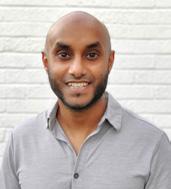
"Great read in @CCLG_ UK Contact mag about need for physiotherapy and rehabilitation when treating kids with cancer.”

Read the full article here
Jake’s story offers hope

“You are a true inspiration to us all.”
Read the full article here
Research webinar offers insight and accessibility


“An excellent summary of the importance and impact of research. Through its overview of @CCLG_UK's approach, it highlights why charities are such vital partners in the UK research ecosystem.”
We are celebrating 100 issues of Contact in this edition! To mark this amazing milestone, this issue is dedicated to the incredible progress made in treating and caring for children with cancer. Innovations in how treatments are given means that chemotherapy can be delivered directly onto the tumour to have the maximum effect (pg 10). We also learn how supportive care is evolving to make sure each child and family is fully looked after throughout their cancer experience (pg 8-9). One of the biggest changes has been in the number of charities who now support families and we hear from the Little Princess Trust (pg 14) and LATCH in Cardiff (pg 11) and how they support patients. As part of Childhood Cancer Awareness Month 2023, we raised important awareness of the long-term impact of having had cancer as a child and how CCLG is addressing these issues (pg 12-13). Here's to the next 100 issues!
editor@cclg.org.uk
View our videos here





If you would like to SHARE YOUR STORY in Contact or have an idea for a theme for us to cover, please let us know. Email us at editor@cclg.org.uk

All
Stay
“Thank you to @CCLG_UK for sharing such important info about physical activity!”
“Great achievements.”
Over the past 20 years, a lot has changed in the care of children and young people with cancer, as this edition illustrates. We now understand more about the value and use of particular ways of treating cancer. We have specific ways of retraining and assisting the immune system in some conditions, with CAR-T cells, an array of artificial antibodies and vaccine-like treatments. For a currently small minority of patients, we can discover the key genetic mutation that's driving their cancer and block its action directly.
We’ve developed new surgical techniques to make surgery more effective, or less likely to cause side effects. National discussion meetings have led to improvements and greater consistency in brain, kidney and bone tumour management. Radiotherapy has leapt on too, with more ways of delivering highly targeted treatments on the back of injectable drugs, and proton beams to hopefully reduce the long-term effects of radiation on healthy tissue. Even when we're using the same drugs, we can now often finely tune them in terms of doses or durations, and even deliver some at home where we would have needed hospital stays before.
These changes have led to better survival rates and, we hope, to less long-term effects from treatment, or, at least, less severe effects. We're also in a different landscape now in the way we manage the side effects of therapy. No longer does each episode of febrile neutropenia mean a week in hospital. We have better methods of giving pain relief, and helping to prevent nausea, vomiting, and mucositis.
The expansion of charities has led to a greater range of support services for children and their families, and helped vastly increase the money and reach of research. What's more, organisations, medical teams and researchers are ever-increasingly involving young people and their families in developing studies and improving clinical services. We're generating better, clearer information, too, to help understand the myriad of things happening and the sometimes-impenetrable language of medicine.
While all the above is progress, we haven't come this far, just to come this far. We want a world where every child with cancer not only survives but does so without any long-term effects. Each day we take a step closer towards this dream –one none of us will give up on.
Children with some solid tumours may benefit from receiving a combination of inhibitor drugs, according to interim results of ongoing research. The research team, which includes researchers at the University of Birmingham, suggests that a combination of the PARP inhibitor olaparib (Lynparza) and the investigational ATR inhibitor ceralasertib showed clinical benefit in paediatric patients with solid tumours exhibiting DNA replication stress and/or DNA repair deficiencies.
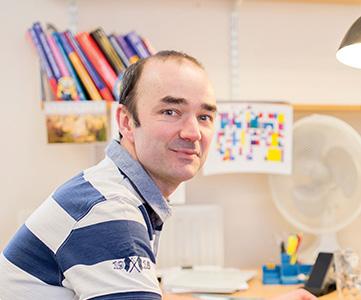
(Source: University of Birmingham)
Austrian researchers have analysed tumours which have spread to the bone marrow in childhood neuroblastoma and discovered that the cancer cells are able to manipulate the immune system. The cancer cells use tiny proteins to send contradictory messages to monocytes, a type of immune system cell that would normally attack cancer cells. This leads to the monocytes helping the tumour to survive and grow. The researchers believe their findings could help develop targeted treatments for tumours which have spread to the bone marrow, such as by targeting these proteins to stop immune cells supporting the tumour.
(Source: NewsMedical.Net)
US researchers have found that creative art therapy might help children cope with cancer-related anxiety. They observed two groups of children in their first year of cancer treatment - one group was offered creative art therapy, which included activities like drawing, dancing and yoga, while the other group wasn't. The group receiving creative art therapy had less anxiety about procedures like blood tests and treatments, but the group without became more anxious as time went on. It's suggested the therapy is included in clinical practice to improve quality of life while on treatment.
(Source: Cancer Nursing)
In Australia, researchers have discovered that a special type of genetic material, called circular RNA, plays a key role in infant leukaemia. Leukaemia begins due to a combination of genetic errors. In some cases of acute leukaemia, a gene called MLL moves from one chromosome to another, fusing with another gene to make a gene that promotes cancer survival. This change can also lead to lots of circular RNA fragments, which bind to DNA and causes breaks and other errors.
(Source: Cancer Cell)
Lillie Killick was 14 years old when diagnosed with leukaemia in 2010. Now 27, she tells us how some of the support she received after treatment helped to inspire her career choices.
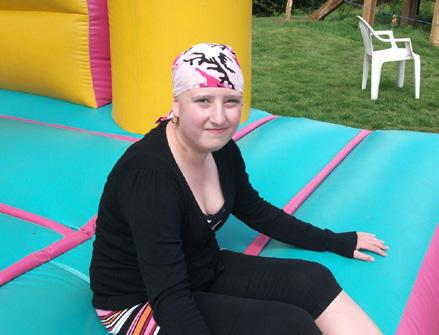
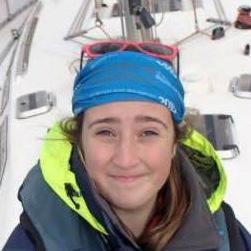
In December 2010, I was diagnosed with acute lymphoblastic leukaemia (ALL), after having felt generally unwell for over a month. I initially had treatment at John Radcliffe Hospital in Oxford as there was no room in the Royal Marsden, where I finished my treatment and appointments.
During treatment, I had a reaction to two chemotherapy drugs I was being given at the same time. Apparently, this was an extremely rare reaction that had only happened to one other person before. It presented firstly with strokelike symptoms, with weakness on the left side which progressed onto both sides. I lost my ability to walk, talk and eat and, having been a keen dancer at the time, my focus and motivation was to get back into this. I also wanted my independence back. As someone who’d always been an extremely private and independent person, the thought of having others constantly care for me really scared me.
very apprehensive day and time. I’m sure lots of young people can relate to this very strange time after finishing treatment - not knowing what to do next, how to feel, or who you are. A lot of my friends had moved on and I felt as though I’d been stuck in time and now unfrozen. I was very distraught and angry at the world because I didn’t know how or where I fitted in.
I spent three years gaining my watersports instructor qualifications, doing some more yacht sailing/racing and going on more trips with the EMCT, eventually becoming a graduate volunteer for them. I then was offered a job as an instructor with Mark Warner Holidays, starting in Sardinia as a member of the waterfront. I’ve done over 11 summer and winter ski seasons, working my way up, and now manage a waterfront in Rhodes, Greece. I want to tell other young people going through cancer that there is a life after treatment. You can make it anything you want it to be despite what’s going on in your life right now. As much as my cancer diagnosis felt like my world was crashing down around me, I wouldn’t change a second of it. I wouldn’t be where I am today if all of that hadn’t happened. I’ve met so many wonderful people, done some incredible things, and now have my dream job in the most amazing country!
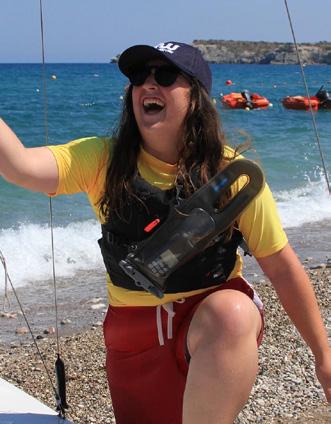
I started physiotherapy to learn how to walk again and was slowly introduced, by a dietitian, to solid foods again. This wasn’t an easy process and, being a teenager, I didn’t really share much about how I was feeling to my family or outsiders. I had treatment for two-and-a-half years, which I finished and actively went into remission on 13 March 2013. This was a joyous yet
I felt quite lost for a while after treatment. I was 17 and unsure what to do next. I was contacted by my hospital and asked whether I wanted to go on a four-day sailing trip on a yacht, something I was very nervous about attending. But I thought, ‘what do I have to lose?’. I was met by a volunteer from the Ellen MacArthur Cancer Trust (EMCT) and taken to the Isle of Wight. There, I met many other young people who were also in remission from cancer. This trip did amazing things for me and made me realise I enjoyed sailing and being around water. One of the skippers pointed me in the direction of UKSA, a watersports centre and charity in Cowes, whose education programme I enrolled in.
 Lillie and friends sailing
Lillie and friends sailing
Jake Andrade was first diagnosed with leukaemia as a 13-year-old, before relapsing aged 19. Now 21, he tells us about the goals he set to help him through his second treatment and recovery, and how he has published a book to help other young people with cancer.
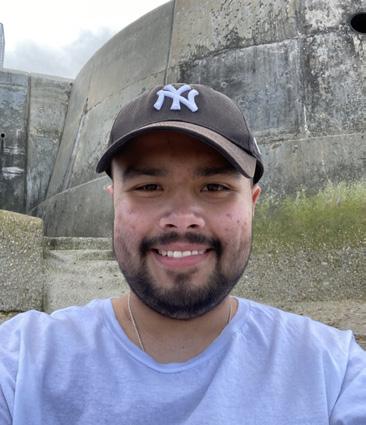
I was first diagnosed with acute myeloid leukaemia (AML) in March 2016. After four rounds of chemotherapy, followed by a bone marrow transplant, I was in remission and given the all-clear in October. My five-year remission period was probably the best five years of my life so far! I’d made a great recovery, resuming my paper round shortly after being discharged. I was back at school by January 2017, and completed my GCSEs in the same year as my classmates in 2018. By April 2019, I was taken off my ‘lifelong’ medication, and by October that year, my already decreasing hospital appointments turned yearly.

I soon began a weekend job, alongside studying for my A-Levels, which I completed in 2020. A late effects clinic a few months later found I’d suffered no damage from my previous treatment. Clearly, my hospital days were behind me, and I had no health problems at all! While I still attended appointments once a year, hospital was no longer a prominent part of my life. Lockdown during the COVID pandemic encouraged me to become more active, and I started running and weightlifting. I began driving lessons and studying Politics and History at the University of Suffolk.
By October 2021, the publishing process of my book, which recounts my journey with AML, was underway. However, that same month, my five-year remission period all came crashing down. A routine blood test found I was mysteriously neutropenic, which meant I was prone to infections. After a couple of months of declining blood cells, this was finally investigated with a bone marrow biopsy in December 2021. Unfortunately, this confirmed that my AML had returned. I was required to undergo two more rounds of chemotherapy, followed by a second bone marrow transplant.
My relapse was a devastating and shocking blow to me, and couldn’t have come at a worse time. I was living my life to the fullest. I was at university, working, learning to drive, had a social life and my book was in the final editing stage, close to publishing. And, just like that, leukaemia attempted to sweep all that away from me – again. But I wouldn’t allow it.
Jake undergoing chemotherapy after his relapse with AML, February 2022

I saw the progress of my five-year remission period as my inspiration and was determined to remain positive. I’d done it once and I could do it again. This was just a bump in the road, and once I’d finished treatment, I would just pick up where I left off. I decided to stay on at university throughout my second treatment. I didn’t leave my job, but instead, I went off sick, hoping to return in the future. My driving lessons were put on hold, but I’d come back to them. And, while I was upset about all the time and money I’d devoted to my book, I couldn’t possibly publish it anymore as I now had more chapters to write!
Before treatment started again, I compiled a list of my reasons to live. These reasons contained my goals, which acted as my motivation to get through treatment. Some of my goals were long-term, such as seeing my book get published or to graduate, and some of my goals were short-term, such as eating Chinese food to celebrate being discharged. Before transplant, I also set myself some shorter-term post-transplant goals with ideal timeframes, which included resuming my driving lessons, finishing my second year of university with a First, and returning to work. These three aims would work as a launchpad for me to get closer to my much bigger list of reasons to live that I’d written in December 2021 before treatment commenced.
Treatment was gruelling. Not only did I have chemotherapy, but I also had to undergo radiotherapy and my second bone marrow transplant was a lot more complicated as my dad was my donor. I got through it again, though, and I entered remission for a second time after my transplant in April 2022.
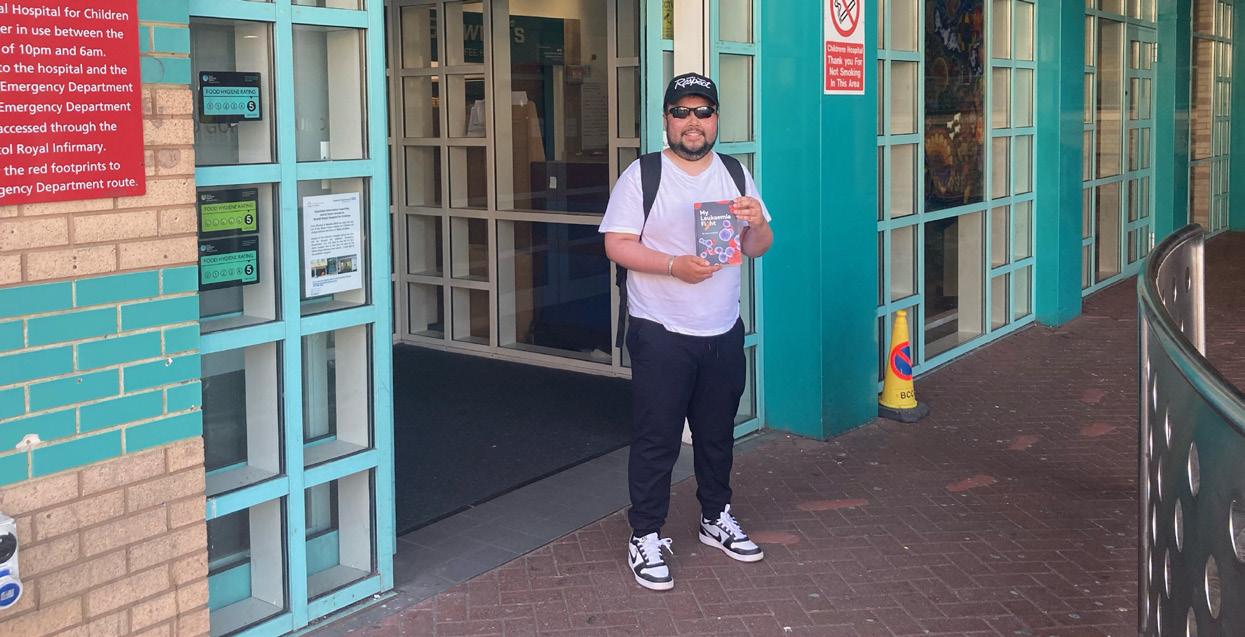
By November, my three post-transplant goals were complete. I completed my second year of university with a First, and I’d resumed my driving lessons in the summer. I returned to work, temporarily going off sick again due to graft versus host disease (GvHD), but I was back again a few months later. In January this year, I passed my driving test. Finally, my book, ‘My Leukaemia
Jake's book published, February 2023
Fight’ – with its manuscript having doubled in size since my second diagnosis – was officially published in February 2023!
In terms of my health, I’m still struggling. My bone marrow is quite fragile, and my blood counts sometimes drop to dangerous levels. I’m still suffering badly from GvHD, and receive extracorporeal photopheresis twice a month, which involves me being attached to a machine to treat my GvHDcausing cells. I’m also struggling with the physical and mental effects of my second treatment. The fear of relapse will always be there, and I’m exhausted by my previous chemotherapy, made worse by the steroids I currently take to combat my GvHD. However, things are getting better, and I’ve progressed to monthly hospital clinic appointments. The treatment and steroids have caused fatigue and weight gain, and I now attend physiotherapy appointments to get me active again. This will take a while, but I’m making the small steps to get better!
Just like when I relapsed, I haven’t let my health disrupt my progress in life. I’ve now completed all three years of university, finishing with a first-class degree, and I look forward to graduating in October this year. I’m currently looking for a job before I start my master's degree in history next year. Alongside work and studies, I’m also working on promoting ‘My Leukaemia Fight’. I wrote my book to help and inspire other patients and families going through something similar, as well as to provide interest and spread awareness to the wider public. I hope my book shows that you can make progress and bounce back after a devastating cancer diagnosis!
If anyone is interested in my book, please visit: jake-andrade.myshopify.com or for the eBook: www.amazon.co.uk/MyLeukaemia-Fight-Jake-Andradeebook/dp/B0C6BVV8C4
If you’d like to get in touch, please email me at jake.andrade2908@gmail.com
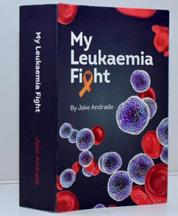
Supportive care is an area of children’s cancer care that has progressed significantly in recent decades. Dr Bob Phillips and Dr Jess Morgan, members of CCLG’s Supportive Care working group, explain just some of the ways it has improved to help patients and their families cope with their disease and the treatment of it.
There is far more to the treatment and care of children with cancer than the delivery of drugs and procedures. Support is often needed to manage any side effects along with the emotional burden of treatment. Supportive care relates to the physical, social, educational and psychological aspects of cancer and its treatment, and helps the young person, and their family, to live as well as possible with the effects.
Just as we’ve been developing the anti-cancer parts of treatment through research, we should be doing the same with supportive care. Research priority setting exercises, where patients, families, academics and clinicians share their
top unanswered questions consistently rank supportive care questions very highly. The research which makes supportive care better:
• is patient-centred (it takes patient-important questions and assesses things which really matter)
• multidisciplinary (it includes all the professions which look after children with cancer, not just the clinicians delivering treatments)
• collaborative (we'll never learn anything without this approach)

• uses both quantitative (‘counting’) and qualitative (‘talking and listening’) approaches
Here are some examples of how supportive care can make a difference to young patients:
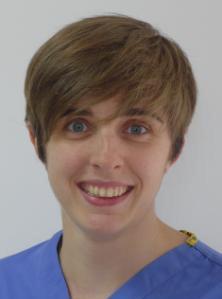
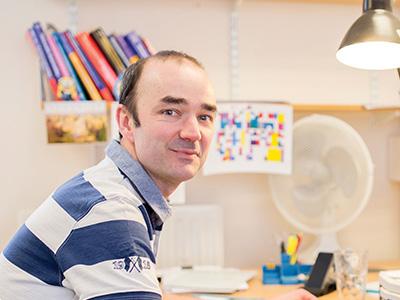
Managing suspected infection during periods of immunosuppression after treatment for cancer is very common, disruptive and unpleasant. We know that 'febrile neutropenia', having a temperature when there are very few infection-fighting neutrophils (a type of white blood cell), is a complication that can lead to very serious sepsis, and sometimes even death.
Looking back 15 years, everyone who was admitted to hospital with febrile neutropenia was treated for seven days with a combination of IV antibiotics, even if it was just a cold. Over that time, research was undertaken to work out who was at greater risk of serious infection, and who was at much less chance of running into problems. This was combined with research understanding how staff, families and young people felt about the treatment of infection.
This all then meant national and international guidelines changed to promote the safe use of shorter (two- to five-day) antibiotic courses for many children, and even shorter (eight to 24 hours) of hospitalisation for some. This was then found to be really useful in the COVID-19 pandemic where getting out of hospital and back home felt even more important.
Back in the early 2000s, we’d routinely do a chest X-ray of every child who came in with febrile neutropenia 'just in case' they had a chest infection. This wasn’t ideal for anyone, and research showed it wasn't actually that useful. It was far better to look at the child carefully, and only do the X-ray if there was a really good reason (like if the chest sounded like there might be pneumonia). Sometimes, advancing supportive care means doing 'less' rather than doing 'more'.
Sometimes, making supportive care better is absolutely about doing 'more' though. Some people will have had the experience of seeing children with severe chemotherapy-induced mucositis. This complication, where the child's mouth becomes extremely sore, with ulcers so widespread they can't swallow their own saliva, eat, or drink is extremely distressing. Children may need feed into an NG tube, or sometimes direct into their central line (called TPN: total parenteral nutrition), and a morphine pain relief pump. It was very clear that we needed to 'do more' when it came to preventing and treating mucositis. Two treatments were developed in adults who were undergoing bone marrow transplantation. One, a type of mouthwash which reduced the chances of mucositis occurring and another, a dietary supplement to try to heal the gut as the chemo or radiotherapy attacked it. Studies were later undertaken to see if it works for younger patients. The trials found that the extremely salty mouthwash was just too horrible for younger children to keep in their mouth long enough for it to work, and if anything, made them feel worse. The dietary supplement didn't work much either, given a number of different ways, but didn't really cause many problems. Not all 'good ideas' work and not everything that works in adults works in children. However, some things do work and might make things better. There's a different mouthwash ('Gelclair') that coats the inside of the mouth and for some children makes a big difference. And then there's the development of ‘photobiomodulation’ (PBM) to treat or prevent mucositis. PBM is the use of a special sort of light, coming from a special laser or LED 'torch' which is shone onto the mouth either during chemo, to prevent mucositis, or when mucositis is developing, to try to speed up the healing process. It's still not in widespread use across the UK, as there are lots of practical questions about how to get it into everyday use on the wards, and exactly how much and how often to give, but it is increasing in uptake.
Another common, and deeply unpleasant, experience on treatment is feeling sick and the act of being sick. It's difficult to believe, perhaps, but there were young people who abandoned their treatment in the 1990s because the nausea and vomiting were so bad. The development of ondansetron around the turn of the century revolutionised anti-sickness medicine. More drugs have been developed, like aprepitant, and there’s been an increase in the understanding about how to use them.
They’re still all developed in adults first, and we'll need to keep fighting for better ways to use the studies from adults and get children recognised earlier. Unlike the treatment of acute lymphoblastic leukaemia (ALL), which is more or less identical if you're in Aberdeen, Bristol, Cardiff or Belfast, anti-sickness medicine use is much more variable. International and national guidelines might help in greater consistency and the better conversion of the best, newest evidence into practice, and members of CCLG are at the cutting-edge of this work.

Supporting the emotional and psychological challenges that treatment for cancer brings has developed enormously over the decades and helping people with how they feel is a really big part of supportive care. Partly, this has been supported in the UK by making sure that psychosocial support is considered a key part of care, just like the chemotherapy drugs and the safe systems to give them.
It’s also been aided by the development of specific programmes to support families, such as the ‘Hope in the Community’ programme which was developed with 'Bethany's Wish', a Special Named Fund at CCLG. This was rolled out rapidly through the COVID-19 pandemic, when we realised it might be needed more than ever. (This was done as part of a research project, where we showed that releasing the entire course in one day was far less effective than a session per week.)
This sort of programme can complement the work undertaken by specialist nurses, social works, counsellors, and psychologists in supporting families through the many challenges of treatment.
Intravenous (IV) chemotherapy (via the vein) was first used routinely to treat eye cancer (called retinoblastoma) in the early 1990s. Before this, most children with advanced disease required either removal of the eye or radiotherapy. Despite the success of IV chemotherapy, there were still far too many cases where treatment failed, particularly in those children with more advanced disease or those with retinoblastoma cells remaining in the jelly (vitreous) of the eye after chemotherapy.
Teams worldwide pioneered new ways of safely increasing chemotherapy doses to the tumour and, in 2006, US doctors gave the first chemotherapy directly into the ophthalmic artery that supplies blood to the eye. This technique, called intra-arterial chemotherapy (IAC), was very successful and introduced in the UK three years later. Doctors can give a bigger dose of chemotherapy directly to the eye but a smaller dose to the rest of the body. The advantages are that children receiving IAC don’t need a central line and are very unlikely to experience the typical side effects of IV chemotherapy, such as low blood counts and infection.
Although side effects, particularly around the eye, can be expected, they're often short-lived and well controlled with medication. Most importantly, since the introduction of IAC, most children have avoided losing their eye.
There’s also been progress in the treatment of retinoblastoma cells which have broken away from the main tumour and spread into the jelly of the eye’s centre. These cells don’t have a blood supply and neither IV nor IAC chemotherapy reaches this part of the eye in high enough doses to be fully effective. Since 2012, UK doctors have used chemotherapy injected directly into the jelly of the eye as a way of giving even higher doses to these hard-to-reach cells. This is called intra-vitreal chemotherapy (IViC), and the side effects are very few and generally limited to the eye. This significantly reduced the number of treatment failures due to vitreous disease. The introduction and refinement of IAC and IViC techniques over the last decade have transformed the outlook for children with retinoblastoma. Nowadays, more children keep their natural eye and many will have good vision too.

Many anti-cancer drugs aren’t able to get inside the brain. This is because of a protective barrier surrounding the brain called the ‘blood-brain-barrier’, which stops toxic substances entering. We’ve developed a paste to deliver chemotherapy drugs to the brain immediately after surgery, bypassing this barrier. The paste is applied to the space created after surgically removing most of the tumour, and releases drugs targeting the remaining cancer cells which surgery can’t remove safely. Importantly, the paste is biodegradable, and the human body safely removes it over a period of two to three months, meaning a second surgery isn’t required to remove the paste.
We first achieved success in using the paste on research samples of an adult brain tumour called glioblastoma. Survival was significantly longer compared with the current standard of care for this tumour type, and in some cases showed no further disease in the brain. This is an exciting finding, and we are now testing whether drugs delivered by the paste can show similar effectiveness in difficult-to-treat childhood brain cancers.
Other types of brain tumours, such as medulloblastoma and atypical rhabdoid/teratoid tumours which occur in the back of the head, are difficult to treat safely. There’s a devastating consequence of radiotherapy, in particular, which leads to speech loss and learning delays. In addition, chemotherapy delivered through the blood causes damage to healthy body parts. Therefore, there’s an urgent need to develop safer treatments. We are currently testing drugs for these types which are potentially effective, but don’t cross the blood-brain-barrier very well.
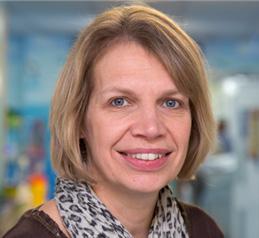
It’s not just the type of treatments that doctors look to improve, but the way they can be delivered so they are safer and more effective, too. We hear from two leading experts on already established advancements in eye cancer treatment, and a developing example of progress in brain tumour therapy.
LATCH Welsh Children’s Cancer Charity supports children and young people with cancer and their families who are under the care of the Children’s Hospital for Wales. As it celebrates its 40th anniversary, LATCH’s CEO, Menai Owen-Jones, reflects on its achievements over the past four decades.
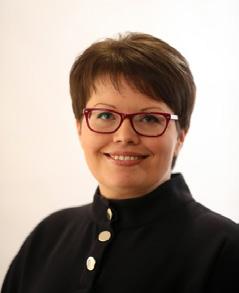
When I joined LATCH last year, I quickly learned what makes the charity special. I was touched by the personalised and individualised support services provided to children, young people and their families as they face the long, gruelling and uncertain journey of cancer treatment. Since its inception, the essence of the charity has been about giving hope and making life a little easier for them by putting their needs first.
LATCH was established in 1983 by a small group of families whose children were undergoing treatment for cancer. They wanted to provide mutual support and raise money to improve the lives of patients. Back then, the Children’s Oncology Unit for Wales was based in Llandough Hospital, Vale of Glamorgan, which explains the origin of the acronym LATCH - ‘Llandough Aims to Treat Children with Cancer and Leukaemia with Hope’.
In 2004, the Children’s Oncology Unit moved to Cardiff to the new Children’s Hospital for Wales. At the time, through a significant public fundraising campaign, LATCH funded a purpose-built eight-bed accommodation unit at the hospital for families to be able to stay on site while their child is an inpatient.
We provide a home-from-home experience for our families staying with us at our on-site hospital accommodation, and supply things such as toiletries, food, laundry, entertainment and kitchen facilities. LATCH offers several other support services including financial grants, holiday caravans and events and activities for children, young people and their siblings, to bring families together for support and community. Our social
workers, meanwhile, specialise in issues facing the families of children receiving treatment for cancer and provide practical, emotional and financial support.
Since joining LATCH last year, I’ve seen first-hand the importance of partnership working between the health service and patient organisations, and the positive difference collaboration makes. The LATCH team works with the clinical teams at the Children’s Hospital for Wales and our social workers are part of the multidisciplinary team of the Children’s Oncology Unit.
We also provide financial grants and funding for the Children’s Hospital for Wales Paediatric Oncology Unit for capital improvements, medical equipment and research projects. Our partnership working with the hospital and Cardiff and Vale University Health Board extended to funding a £1.2m refurbishment of the paediatric oncology inpatient ward, Rainbow Ward, in 2021 and the initial development of an early phase clinical trials research service for children and young people with cancer. This directly helped to establish the first Experimental Cancer Medicine Centre (ECMC) in Wales.
We know more needs to be done to raise awareness of the needs of children, young people and their families impacted by cancer, including highlighting the financial hardship many face and how more financial support is needed to help them. Looking ahead, this is an exciting time in our journey as we focus on the development of our services to build on the achievements of the past 40 years. We’ve always been there when families need us most and we’ll continue to place their needs first, as our founders did all those years ago.
To find out more about LATCH or to support its 40th anniversary celebrations
Visit: www.latchwales.org
Kathryn,
Email: Lisa.davies4@wales.nhs.uk

"As a family going through a cancer journey, the importance of having a charity like LATCH picking and propping us up along the way, making us smile when we never felt it would be possible again was priceless.”
mum to Gethin, who was diagnosed with leukaemia when aged six
This year, for Childhood Cancer Awareness Month (CCAM), CCLG has been working hard to raise awareness of the long-term impact of childhood cancer and its treatments.

Our recent survey of childhood cancer survivors and their parents/carers' revealed that survivors of childhood cancer can sometimes live with a range of physical issues such as fatigue, heart failure, nerve damage, hearing loss, slow growth in height and bones, and infertility. These long-term side effects, known as ‘late effects’, need lifelong follow-up care and management.
Our survey also found that nearly three out of five (57%) survivors reported an effect on emotional health and wellbeing, with patients describing a range of mental health issues, including depression, trauma-related conditions such as
PTSD and self-esteem issues. The fear of cancer returning, or of managing health conditions as a result of treatment, meant that health anxiety was prevalent, with 77% of survivors worried about future health needs and 65% felt scared about what might happen.
Parents are also hugely affected and are left feeling worried that their child’s cancer will come back (95%), scared of not knowing what might happen to their child in the future (87%), feeling anxious around scans and follow-up (86%), and feeling abandoned and lost after treatment.
Ellen, 27, diagnosed with acute promyelocytic leukaemia (APML) in 2005, when she was nine years old, before relapsing aged 12.

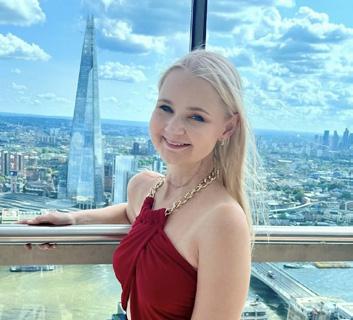
“My life is very different to others, and I think that's difficult to navigate as a young person. When treatment finishes, life doesn’t just go back to what it was before and, often, neither do you. So, it’s important that you just give yourself time to adjust. Enjoy life and take the time to process everything that you've been through. It’s important to be kind to yourself, even if it’s sometimes frustrating that you can’t do what others can.
I’m so grateful to be alive and I really do find joy in every single day. That’s one great thing that cancer has given me - a deep love for the world and being alive, and an appreciation and enjoyment of the little things in life. I don’t want my story to worry people – while I’ve been left with a lot of late effects, they don’t impact everyone in the same way or to the same extent. I’m extremely hopeful that with the newer treatments that are available now and that continue to be modified and found, late effects won’t be so impactful for childhood survivors in the future.
We also need research looking at support for people with late effects, and that’s why the work of charities like CCLG, who fund research across the whole cancer journey, is so important. The more research we have, both into new treatments and how to support survivors, the better for future generations.”
Kimberley, 25, was diagnosed with rhabdomyosarcoma, when 13 months old in 1999.
“I think that once you’re done with treatment or that little bit of recovery that comes after, people often think you're okay. They don’t quite understand these conditions that you’re living with, how they’re linked to cancer, how they impact you at different times and how they will continue to impact you and how that’s not going to change.
Without the first-hand input and feedback from what we've experienced, it’s going to be hard to improve services and support for patients. It's an important discussion to be had and I feel it does need to be understood more, particularly as it’s such a broad and complex thing.”
“As the professional network for those involved in the treatment and care of children with cancer, we are in a unique position to feed back our findings to our members. These invaluable insights will help us influence positive change through our network of national experts, who are working hard to understand the full extent of childhood cancer’s impact, which will, in turn, help implement improvements in care and resources.
There’s lots more to do to develop appropriate support for survivors, but we’re working hard to make it happen.”
OTHER KEY STATS FROM THE CCLG PUBLIC SURVEY:
TWO THIRDS OF PARENTS said their child has been left with emotional and mental health issues which affect them all the time.
95%
ALMOST 100% of parents are worried their child's cancer will come back
85%
85 % OF PARENTS were not fully confident at managing their child’s health needs after treatment has finished.
7 IN 10 survivors wanted information on how to live a healthy life.
7 IN 10
OF BOTH PARENTS AND SURVIVORS
wanted more information on how to support emotional and mental health after treatment had finished.
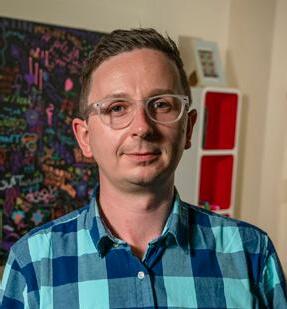
70%
70% OF SURVIVORS said a space to share experiences and ask questions with other survivors would be very helpful.
HOW CCLG IS SUPPORTING CHILDHOOD CANCER SURVIVORS:
CCLG has a range of information resources for survivors
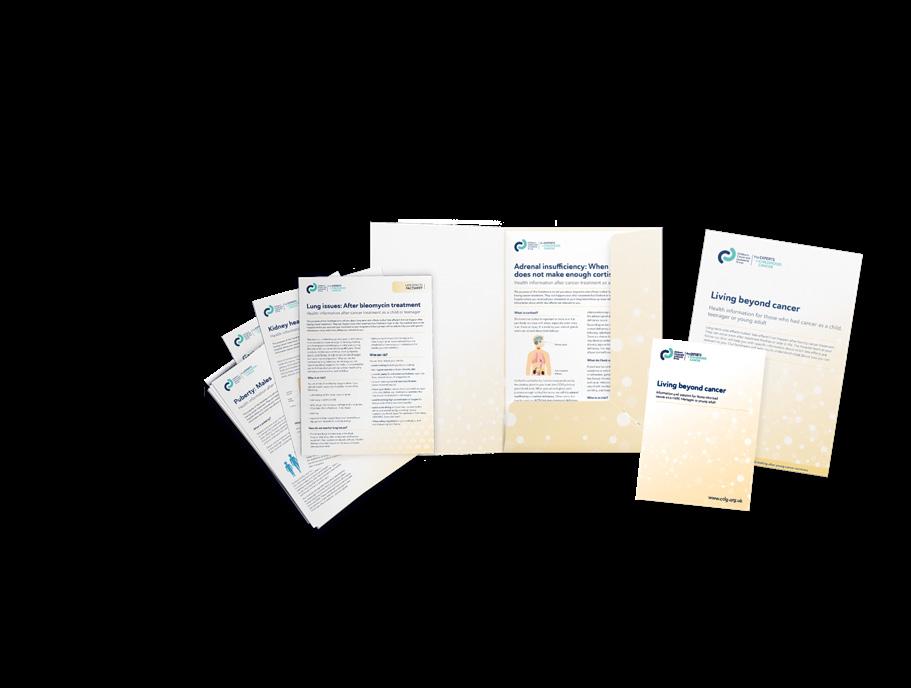
Featuring expert written information on
• long-term side effects
• how to stay healthy throughout life
Download our free 'Living Beyond Cancer' factsheets from www.cclg.org.uk/living-beyond-cancer
The Little Princess Trust (LPT) forges important partnerships with other charities, such as CCLG, to further children’s cancer research. Its Chief Executive Phil Brace tells us how the LPT has come together with Cancer Research UK to help more young people access clinical trials.
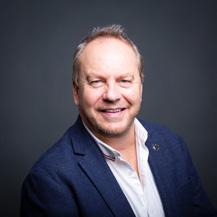
The LPT is known throughout the country for providing real hair wigs, free of charge, to children and young people who have lost their hair due to cancer treatment. However, fewer people are aware that we are also one of the largest charity funders of childhood cancer research in the UK.
We’ve always believed that every child deserves the best chance of survival, regardless of their cancer type, and that’s one of the reasons why we decided to begin funding childhood cancer research in 2016. Through our successful partnership with CCLG, who works closely with us to share its expertise, we've looked to fill gaps in research funding and supported a wide range of projects from discovery science to clinical trials.
However, we’re fully aware that while great progress has been made, there is so much more to do. Since 2016, we’ve always tried to forge partnerships with other cancer research funders – and that’s what we’ve done again this year with Cancer Research UK to effectively treble the amount of funding going to the Paediatric Experimental Medicine Centres (PECMC), a network of centres across the UK. (PECMC) that are spread across the UK.


We believe that the £6.6million going to PECMCs across the next five years will deliver an increase in clinical trials into promising new treatments for cancers affecting children and young people. The vital funding from the partnership –which also includes the National Institute for Health and Care Research, the Chief Scientific Office in Scotland and Health and Care Research Wales – will give young people, up to the age of 24, access to
trials testing promising new medicines that aren’t available anywhere else. And, in doing so, they help doctors and researchers find more effective and less toxic drugs that don’t have lasting consequences for young patients later in life. We want this funding to reduce the side effects and allow these inspirational young people to be able to lead normal lives as they grow older.
We’ve always believed that every child deserves the best chance of survival, regardless of their cancer type, and that’s one of the reasons why we decided to begin funding childhood cancer research in 2016.
Ultimately, the ECMC network trials bring the medicines of the future closer to the children and young people of today. The involvement of the LPT in this partnership is a landmark moment in our charity’s history, while it also reaffirms our commitment to funding childhood cancer research.
With the increase in funding, which is almost three times the amount from the
last five-year period, the PECMC network will expand to include a new centre in Cardiff. Trial designs will get more patientfriendly, too – with the network supporting tests and scans at local hospitals as well as the 12 PECMCs.
The new funding will also pay for the development of a data platform that brings together all the information we can gather about people’s individual cancers. Plus, over the next five years, the PECMC network will be focusing on using its data to improve how we use established drugs.
And, of course, the money will also ensure the network can train and employ more of the specialist nurses, researchers and data managers it needs to carry out innovative clinical trials built around the needs of patients.
Emma began showing signs that something wasn't quite right during February half-term in 2020. She was a keen swimmer, who trained four or five times a week, but was finding the sessions hard going and complained her head felt like it was being squeezed by her swim hat. She then started getting visual disturbances and while raising funds for her swim club, packing bags at a local supermarket, her vision blacked out completely for a minute or so. We took her to A&E, and they booked us an appointment with an eye clinic for two days later. We arrived at the appointment at 9.30am on 2 March. By 3pm, I'd been escorted into a side room to be told Emma had leukaemia and we'd be transferred by ambulance to Bristol Children's Hospital to start treatment, later that day.
sickness, allergic reactions and a scary sepsis episode, as well as countless blood and platelet transfusions and numerous hospital stays due to febrile neutropenia.
Saunders Foundation, Molly Olly's Wishes, The Little Princess Trust, Supershoes, Cyclists Fighting Cancer, Kid's Cancer Charity, Dexter's Odyssey and Bright Futures UK. We can’t thank them all enough for their help, and hope they know their work has made the last few years a lot less harrowing for not only our family, but countless others over the years.
From then on, we just seemed to switch into autopilot taking each hour, day and week at a time, for the next 843 days of treatment. It was really tough going, but Emma coped amazingly. This was despite enduring terrible mucositis, nausea,
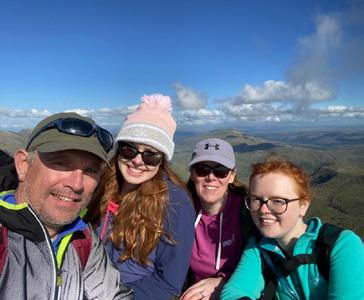
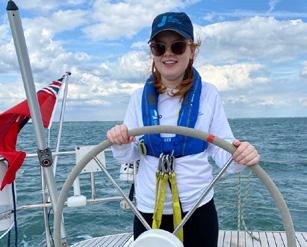
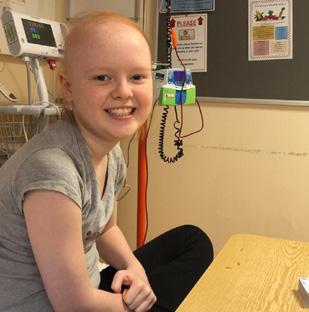
Our experience was made even more difficult by the start of the COVID pandemic. Ordinarily, both parents could support and care for their child in hospital. And, providing relatives and friends were well, they could also visit at any point. However, as soon as COVID restrictions hit, only one parent was allowed on the ward at once. This meant Emma missed out on morale-boosting visits from her siblings, friends and extended family. Emma's older sister, Bethan, was only able to see Emma via a Zoom call or Facetime for the first month of treatment. My husband and I would only fleetingly see each other, as we swapped over in the corridor, every three days. Looking back on that situation now, we did it without question, but recalling this memory, the heartbreak of being turned away from the ward on Mother's Day still hits hard.
While at times it felt like we were going through this alone, our experience would’ve been a lot worse, had it not been for some special charities. Throughout Emma's two-and-a-quarter years of treatment and beyond, we benefited from the services of Young Lives vs Cancer, the Ellen MacArthur Cancer Trust, Ben
Emma, who’s now 15, tried to stay as active as possible throughout treatment. If there was one piece of advice she'd give to anyone in a similar situation, it would be to get out in the fresh air. Even when she wasn't feeling strong enough to walk very far, we'd push her on her scooter or bike. She’s now over a year post-treatment and continues to go from strength to strength. She's returned to swimming competitively, for Frome Swimming Club, and is targeting achieving qualifying times to compete in the Somerset County Championships in January 2024. Emma’s also turned an average attendance at school from 32% in Year 9 to 96% in Year 10. And, having successfully completed her bronze Duke of Edinburgh award during the maintenance stage of treatment in 2022, she’ll be embarking on her silver expedition in September 2023.
How support helped with moving forward during and after treatment
Sarah Davis' daughter Emma was diagnosed with acute lymphoblastic leukaemia (ALL) as a 12-year-old. She writes about the support the family received and the progress Emma has made since finishing treatment.Emma (right), with dad, Tim, sister, Bethan, and mum, Sarah
"If there was one piece of advice she'd give to anyone in a similar situation, it would be to get out in the fresh air."
First formed to establish clinical trials in childhood cancer, research has always been an integral part of CCLG’s work. Ellie Ellicott, CCLG Research Communications Executive, tells us more about its research journey and how the experiences of those that matter the most are helping shape future directions.

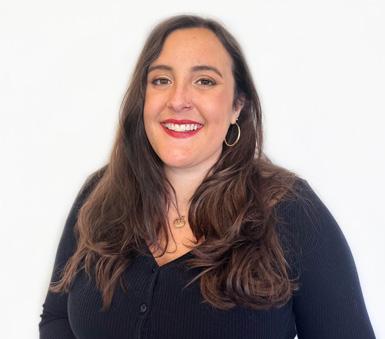
As recently as the late 1970s, doctors didn’t know much about childhood cancer or how to treat it. At this time, fewer than three in 10 children survived cancer. There were no specialist childhood cancer doctors and nurses, no specific training and no specialist hospitals.
The organisation that would become CCLG, the UK Children’s Cancer Study Group (UKCCSG), was founded in 1977. It aimed to establish clinical trials for children and bring experts together to learn about childhood cancer. At the time, there were almost no clinical trials available for children with cancer, few childhood cancer survivors lived past 18 years old, and paediatric oncologists were only just starting to be recruited.
The UKCCSG set up their first clinical trials in the 1980s for children with brain tumours, Ewing sarcoma, germ cell tumours and Wilms’ tumour. This decade also saw research nurses being hired and designated wards and clinics for children with cancer. The group was the ‘voice of paediatric oncology’ in the UK, pushing for improvements for their young patients.
By 1990, over 80% of children with cancer were treated at UKCSSG treatment centres and there was much more data available to those researching childhood cancer. The national registry of childhood cancer patients, set up by the UKCSSG in the late 1970s, now included over 14,000 patients, and the new Tissue Bank meant that cancer tissue samples were easily available to researchers for the first time.
By the 2000s, over 25,000 survivors of childhood cancer were living in the UK and seven in 10 children could be cured of their cancer, in part due to the research studies launched by the UKCCSG. After merging with the UK Childhood Leukaemia Working Party to form CCLG in 2006, the hard work continued. Though no longer responsible for clinical trials, we were determined to continue developing research and in 2015, we launched our very first research strategy. Since then, we’ve funded over 250 research projects, helping to find new and kinder treatments into even the rarest types of cancer. With there now being over 40,000 survivors of childhood cancer, there’s an increasing focus on finding kinder treatments that won’t leave patients with long-term problems, like learning
difficulties or hearing loss. There’s also a focus on involving the people that matter the most – young patients, survivors and their families – in helping shape the future different direction of our research, gathering their views and opinions to understand what’s important to them.
That’s why, alongside The Little Princess Trust, we funded the Childhood Cancer Priority Setting Partnership in 2019. The goal was to make sure that research projects aligned with the priorities of those affected by involving patients, families and healthcare professionals. Earlier this year, we launched a final report detailing the top 10 research priorities and how they were reached. They covered topics such as why children relapse, kinder treatments and how to improve the hospital experience. The focus is now on making sure these priorities are turned into real research projects going forward and some childhood cancer research charities, including CCLG, have already asked any researchers applying for funding to meet one of the priorities with their research proposal.
CCLG has come a long way since the early days of the UKCCSG, but we’re determined to keep making progress so that every child with cancer not only survives but does so free from the longterm effects of their treatment.
www.cclg.org.uk/our-







PROJECT TITLE: Defining the molecular landscape of paediatric and adolescent acute leukaemia in Tanzania

















































LEAD INVESTIGATOR: Dr Jonathan Bond
INSTITUTION: University College Dublin







































AWARD APPROX: £78,000 (funded by The Little Princess Trust in partnership with CCLG)
Project team members Prof Jonathan Bond and Dr Peter McCarthy write... We’re working on the SALAMA project with colleagues and friends in Muhimbili National Hospital, Dar-esSalaam, Tanzania. SALAMA stands for ‘Studying Acute Leukaemia Mutations in Africa’. It’s also a Swahili word that doesn’t translate exactly to English, but roughly means ‘harmony’.
SALAMA originated in a longstanding clinical collaboration between the national childhood cancer services in Ireland and Tanzania. These links were created by the amazing work of Dr Trish Scanlan, an Irish paediatric oncologist who has worked in Dares-Salaam for nearly 20 years.
During this time, we’ve found out a huge amount about the genetic makeup of paediatric leukaemias, thanks to new technology called ‘next-generation sequencing’. This has helped us understand what makes the leukaemia cells grow and divide, therefore helping us find better treatments for the future. This information is already used in Ireland and the UK to help decide what therapies should be used for patients, and how intensive they should be.
However, nearly everything we know about the genetic make-up of childhood blood cancers comes from studies in high-income countries like Ireland and the UK, and we know almost
nothing about the genetic make-up of childhood blood cancers in Africa. Our research aims to bridge this gap.
Our Tanzanian partners have been doing great work on the ground so far: explaining the study to patients and parents and asking their permission to use a blood or bone marrow sample for genetic analysis. We’ve been happy that nearly everyone they’ve spoken to so far has agreed to take part. DNA and RNA is extracted from leukaemia cells in Dar-es-Salaam, thanks to our collaboration with the SEREN social enterprise established by Professor Anna Schuh of Oxford University. This is then sent to Dublin for sequencing analysis at our research partners Genuity Science, with the results being transferred to us at University College Dublin.
We use a scientific approach called ‘systems biology’ to investigate how these mutations drive cancer cells to resist treatment. Broadly, this means using computer models to analyse the internal molecular wiring of leukaemia cells. This is like the computer models used to help design complex machines like aeroplanes. In the same way that a computer might predict what happens to an aeroplane when an engine fails, we can also predict what happens to a leukaemia cell when a mutation happens, or if we give a particular treatment. Excitingly, these models can also help us identify hidden ‘Achilles’
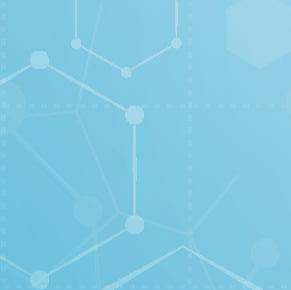

heels’ that could be used for new blood cancer treatments in future. We’re using these methods to investigate blood cancers in Irish patients, too, so these studies will complement each other.
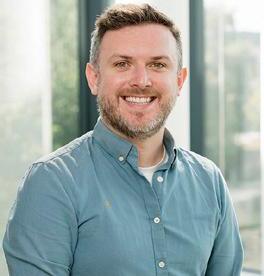

Long-term, we hope this research will help us adapt therapies and improve how African children with leukaemia are treated. We also predict that our results will flag cases that need specific ‘designer’ anti-leukaemia drugs, and less expensive medications that could be cost-effective in a lowerincome setting.
We’re proud that this is a true collaboration with our colleagues in Tanzania and we’re very thankful to Dr Magreth Msoffe, Dr Miraji Omary, Dr Lulu Chirande, Dr Koga Luhulla, Dr Rehema Laiti, Magdalena John and the tireless Ruchius Philbert at Muhimbili, Dr Shakilu Jumanne at Dodoma, and Dr Clara Chamba, Heavenlight Christopher, and Emmanuel Josephat at SEREN. Childhood cancer is a worldwide challenge, and we all need to work together to make things better.
www.cclg.org.uk/our-

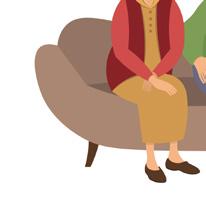


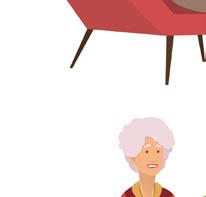

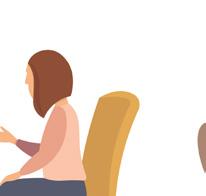
A: I always knew I wanted to work with children but wasn’t sure in what capacity. Work experience in a school for children with Special Educational Needs led me towards psychology and, after qualifying as a clinical psychologist in 2010, I took up a post at Birmingham Children’s Hospital where I’ve remained since. I’ve primarily provided support to children and young people with cancer, most recently within the neuro-oncology team. My role now is primarily provision of neuropsychological assessments for young people who have had treatment for a brain tumour. I’ve recently finished a qualification that allows me to call myself a paediatric clinical neuropsychologist – someone who specialises in understanding the links between the anatomy of the brain and behaviour.
working with young people and their families to conduct assessments of their cognitive functioning (learning, reasoning, remembering, problem solving and attention) and considering this in relation to the type of tumour they’ve had, where in the brain this occurred and the treatment they received. We use these assessments to highlight young people’s strengths and weaknesses, consider what strategies might help them and how this information might be useful to them, both at home and in education.
Previously, my role has been more therapeutic in nature, meeting with young people and their families to consider how their diagnosis and treatment has impacted them and any challenges it might be causing them (for example, taking medications, managing the reactions of peers to changed appearance, to name just two of many different reasons), and working with them to think about how they may be able to try different strategies to overcome these challenges.
Sometimes my work simply involves providing a safe, containing space for young people and their families to talk through their experiences and what they mean to them.


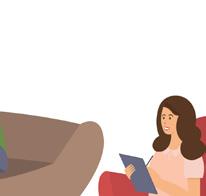
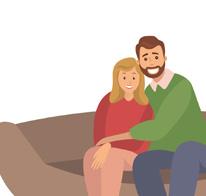

Q: How can psychologists help them make progress?



Q: What’s the most rewarding thing about your job?
A: I love seeing people discover the benefit of talking about their experiences. Often it can, understandably, be really hard to talk about things that are difficult or scary. But I hope that by providing a safe space where there's nothing that can’t be said, people can try out speaking about things they’re finding hard and see how it feels.
A: My working life is incredibly varied, and I’m privileged to work with children, young people and their families while they’re being treated for cancer and beyond. My role now mainly involves
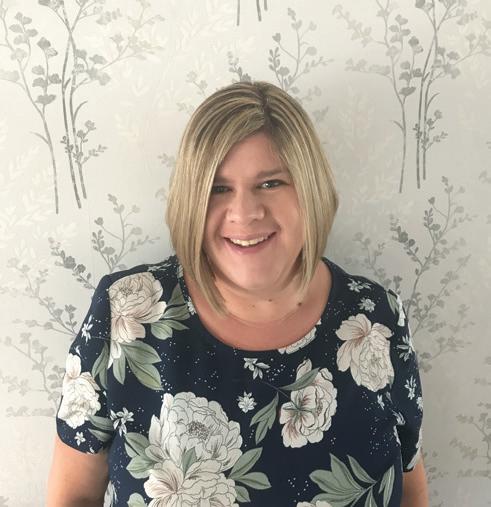
A: Psychologists can listen and help young people and families to process and make sense of their experiences. Often, families say this is a useful way of helping them to reflect on where they’re at, where they’d like to be in the future, and how they can make progress towards their goals. Living with cancer shouldn’t prevent young people from being the person they aspire to be.


Q: Do you have a message for children and their families affected by childhood cancer?
A: It may sound like a cliché, but “it’s okay, to not be okay”. No one can be expected to manage the demands and challenges that come with a child's cancer diagnosis while also remaining upbeat, positive and in control of their emotions at all times. It’s okay to take some time to breathe, take part in activities that provide you with a bit of space (even when those things may be seemingly very small – like a cup of tea, or five minutes fresh air) and seek support from family, friends or professionals. Often, talking about the challenges that you’re facing with someone who can truly listen can be helpful.
"We use these assessments to highlight young people’s strengths and weaknesses, consider what strategies might help them and how this information might be useful to them."
Nicky Webb, is a clinical nurse specialist for the long-term follow-up of survivors of childhood cancer at the East Midlands Children and Young Person's Integrated Cancer Service. She is also a CCLG member and plays an active role in CCLG's specialist Late Effects Group.
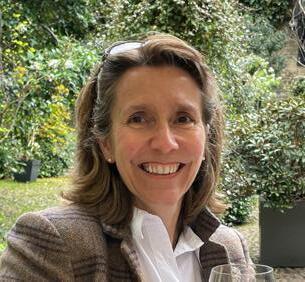
It’s estimated that there are 40,000 survivors of childhood cancer now living in the UK and two thirds of them will experience at least one adverse long-term side effect –known as ‘late effects’ – as a consequence of their cancer or its treatment.
A late effects can be defined as: “An adverse healthrelated problem that occurs months to years after completion of treatment that result either from the treatment or the disease itself.”
Late effects can be divided into two main groups:
• Physical effects, such as damage to a body organ or system such as the pituitary gland, loss of a limb or sight
• Psychosocial effects range from altered body image, self-esteem, impact on education, frailty and overall impact on the individual's mental health
As children and young people approach independence and start taking control of their own personal life choices, it’s highly important that they’re given information surrounding their diagnosis and treatment so they can make informed choices. Monitoring late effects ensures early detection of potential problems and intervention, if necessary. Key professionals working within late effects provide ongoing psychological support and link to other specialist mental health services.
Therefore, long-term follow-up services not only educate the young person, but also provide them with vital information which helps to detect and manage any problems caused by cancer and/or its treatment to ensure the best possible quality of life for childhood cancer survivors.
Sadly, we know that having cancer once increases your risk of developing cancer again, especially as survivors age. However, we also know that our life choices can also increases everybody’s risk of cancer and also of other chronic illness. Leading a healthy lifestyle can reduce those risk factors. It’s incredibly important that we encourage families to keep as active as they can from diagnosis and not just in follow-up, and to support ongoing healthy eating habits throughout.
Coming
Have
Please